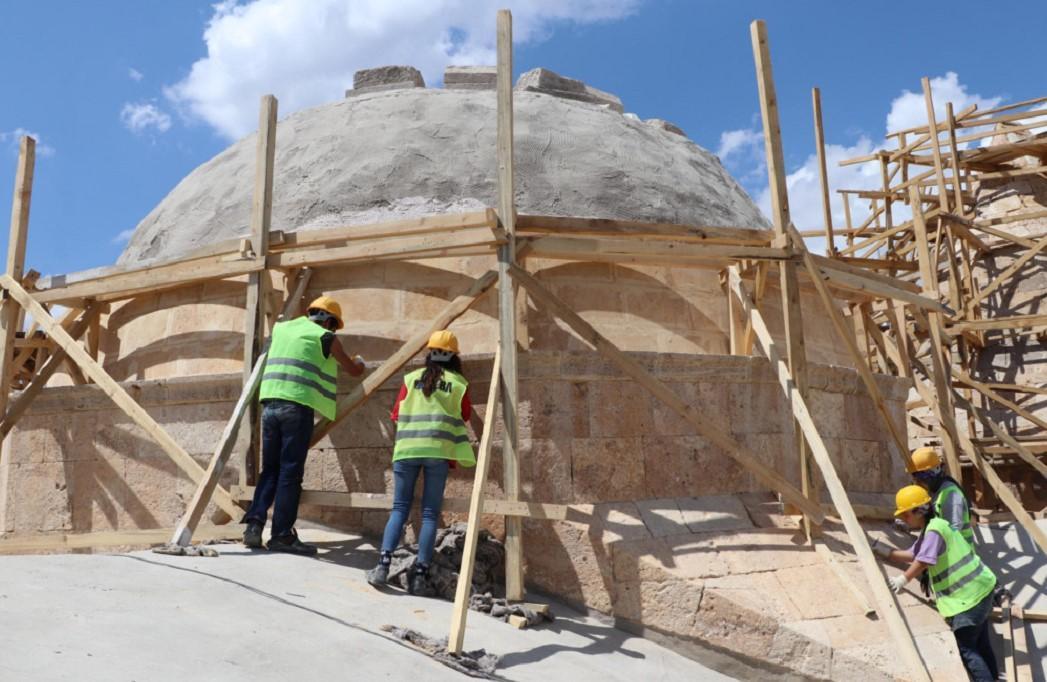World’s first astronomy school, Cacabey Madrasah, gets facelift
KIRŞEHİR

The Cacabey Astronomy Madrasah which is on UNESCO’s World Heritage Tentative List in the central Anatolian province of Kırşehir is currently undergoing restoration.
The Cacabey Madrasah was built between 1271 and 1272 during the Seljuk era by Nureddin Cibril bin Caca Bey, the emir of Kırşehir, as an astronomical school to observe space, the first of its kind in the world.
It was converted to a mosque in 1907. The restoration work at the historical structure first began back in 2019 to protect it against risks from damp and humidity.
The first phase of the restoration work is already completed, and the second phase has been ongoing for more than 5 months now.
A team of experts from the General Directorate of Foundations, including architects, engineers and art historians are taking part in the restoration, which is estimated to cost around 18 million Turkish Liras.
Experts are paying special attention to the observation pit and columns, which resemble rockets. They use a special industrial mixture, which contains no cement, to place stone blocks to the dome of the structure.
“The problem was that during the previous restoration works, the dome and the vaults were covered with cement. Since then, water penetrated the structure and the teams once again used cement to stop the leakage which actually caused salinization,” said Utku Yücel, an architect from the team.
Deep fractures became apparent on the structure when they removed the layers of cement, he added. “That’s why we first needed to reinforce the structure.”
Other members of the team are carrying out very fine and neat work with equipment, which are normally used by dentists, to clean the interior, Yücel explained.
Some 60 people are working around the clock, he said.
“We are actually digging into history here, that’s why we need to be very careful. We are overjoyed when we discover something.”
The General Directorate of Foundations said in a statement that the authority consulted with specialists before the restoration
work began.
Civil engineers inspected the structure, samples were collected from all the walls to make assessments and desalinization work alone took two years, it said, adding that experts, including academics, are taking part in the ongoing efforts.
















